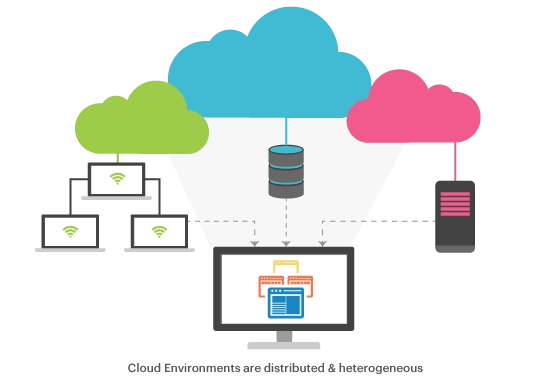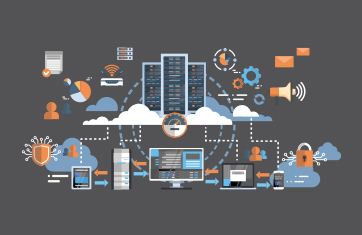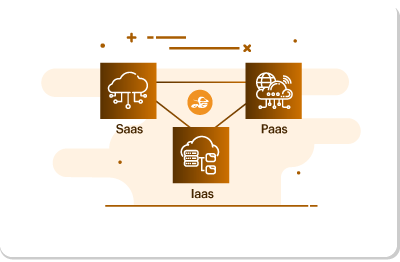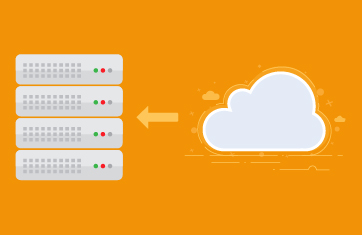Cloud Infrastructure
What is Cloud Infrastructure?
The term “Cloud Infrastructure” has been used more frequently in recent years. In simple terms, cloud infrastructure refers to the virtualized, on-demand resources and services provided over the internet. It comprises computing power, storage, and networking capabilities delivered by hyperscale cloud service providers such as AWS, Azure, or Google Cloud. Users can access and manage these resources remotely, scaling up or down based on demand. This infrastructure eliminates the need for physical hardware, enabling flexibility, cost-efficiency, and rapid deployment of applications. It underpins cloud computing services, offering a foundation for businesses to host applications, store data, and leverage computing resources without the burden of managing traditional, on-premises infrastructure.
Cloud infrastructure is akin to the engine room of a ship where all the essential machinery churns away quietly beneath the deck, powering the vessel. Cloud infrastructure components, like the ship's engine, toil away in the background.
Key components of Cloud Infrastructure. What are the four components of Cloud Infrastructure?
With the “What is cloud infrastructure?” question now answered — and insights into how it works gleaned — it’s important to explore specific cloud infrastructure components. Typically, most descriptions of cloud infrastructure focus on four key components - network, servers, storage, and virtualization which when implemented appropriately at their best offer:
Cloud Infrastructure – What is IaaS? What is IaaS vs PaaS vs SaaS?
Cloud computing service models come in three broad categories:
To understand cloud computing it is necessary to have a very good understanding of the differences between SaaS, PaaS and IaaS. We have an article that explains what you need to know about IaaS vs other models, see: SaaS vs PaaS vs IaaS: Examples, differences, & how to choose (eginnovations.com).
How does Cloud Infrastructure work?
When you sign up for a cloud service, you license a small portion of its massive collection of computers, servers and sometimes application software such as database services. Usually, cloud infrastructure delivers your computing resources and applications through a process called virtualization.
Virtualization leveraging a hypervisor allows a single physical server to be divided into several virtual servers (Virtual Machines (VMs)) that can run their operating systems and applications independently. Your data and applications are stored on these servers, which are accessible over the internet from anywhere at any time. The cloud provider keeps all the servers humming in data centers around the world, making sure they’re secure, maintained, and up to date with the latest technology. However, cloud service providers operate under the shared responsibility model. This means that you are also responsible for keeping an eye on your cloud infrastructure components and ensuring they function up to your standards. While each provider’s shared responsibility model is a bit different, the general approach involves tasking businesses with overseeing data security and app performance. The provider handles all backend security and upkeep.
More on Cloud Infrastructure and shared responsibility models
The shared responsibility model defines the delineation of security and other responsibilities between cloud service providers and users. Providers secure the infrastructure, physical facilities, and foundational services, while users are responsible for securing their data, applications, and configurations. Similar responsibilities pertain to application performance and delivery.
Increased agility, OPEX purchases, scaling, high availability, and outsourced managed services are some of the common reasons why organizations are moving workloads to the cloud. At the same time, there are many who believe that when applications are migrated to the cloud, it is easier to manage them and that the cloud service provider tools will help them greatly in this regard. Is this a myth or a reality? We have a one-stop whitepaper that will help guide you through what Cloud Infrastructure SLAs will cover and what they won’t, see: White Paper | Top 6 Myths of Cloud Performance Monitoring (eginnovations.com).
We also have an in-depth guide to help you identify what you need to do to monitor and manage cloud infrastructure within a shared responsibility model, see: White Paper | Top 10 Requirements for Performance Monitoring of Cloud Applications and Infrastructures (eginnovations.com).
For those seeking a deep understanding of the practicalities of identifying and troubleshooting cloud infrastructure issues we have some real-world step-by-step case studies to explore, see: Challenges in Supporting Key Cloud Business Applications (eginnovations.com) and AWS Cloud Case Study: Troubleshooting Application Performance (eginnovations.com).
What are the Benefits of Using Cloud Infrastructure?
Using cloud infrastructure offers numerous benefits, making it an increasingly popular choice for businesses. Here are some key advantages:
Cost Savings:
Scalability and Flexibility:
Accessibility and Remote Collaboration:
Reliability and Availability:
Automatic Updates and Maintenance:
Security Measures:
Global Reach:
Resource Efficiency:
Innovation and Speed to Market:
Centralized Management:
Automatic Scaling and Load Balancing:
Adopting cloud infrastructure can transform the way businesses operate, providing cost-effective, scalable, and reliable solutions that empower innovation and flexibility.
Who are the main Cloud Infrastructure providers?
The main cloud infrastructure providers (particularly in the USA and Europe), often referred to as the "big three," are:
These three providers are considered the leading cloud infrastructure providers globally, with a comprehensive range of services including compute, storage, databases, networking, machine learning, and more. However, there are other significant cloud providers as well, including IBM Cloud, Oracle Cloud Infrastructure, and Alibaba Cloud, which also offer a range of cloud services and have significant market presence in various regions.
Various surveys, regularly detail the market share of the big three and other cloud providers, see for example: 11 Top Cloud Service Providers Globally (UPDATED 2024) (cloudzero.com), Chart: Amazon Maintains Cloud Lead as Microsoft Edges Closer | Statista or Top 10 biggest cloud providers in the world in 2023 | Technology Magazine.
Cloud Infrastructure and IaC (Infrastructure as Code)
Infrastructure as Code (IaC) is increasingly the mechanism of choice to deploy cloud infrastructure. IaC automates the provisioning and management of cloud infrastructure through code-based scripts and templates. IaC streamlines resource deployment, configuration, and updates, enhancing efficiency and reducing human errors. Any organization looking to leverage cloud infrastructure in any seriousness should be looking at IaC. You can learn more:
AIOps observability and monitoring for Cloud Infrastructure
AIOps (Artificial Intelligence for IT Operations) is an approach that combines big data, machine learning, and other advanced analytics technologies with IT operations. It aims to enhance and automate various aspects of IT operations, including monitoring, event correlation, anomaly detection, and incident management.
For cloud infrastructures deployed at scale, via IaC and in complex often hybrid configurations, AIOps monitoring is becoming ubiquitous to help automate workflows and avoid the need for manually configuring or scripting multiple cloud native tools. See: What is AIOps? - IT Glossary | eG Innovations to learn more.
Cloud Infrastructure vs. Cloud Architecture
The two ideas may sound similar, but they have some key differences. Think of cloud infrastructure as the physical aspects of the cloud environment. It includes all the hardware in addition to the virtualization layer. Cloud infrastructure components are tangible. In contrast, cloud architecture is more like the blueprint of a cloud environment. It involves the design principles, their service models (like Software as a Service or Platform as a Service), and the deployment strategy (public, private, or hybrid). In simple terms, cloud architecture dictates how the cloud service is organized, built, delivered, and operated. Architecture accounts for things like user needs, security requirements, and which services will be delivered on the cloud infrastructure. The architecture is the strategy, and the infrastructure is the implementation of said strategy.
Another major difference is the need for monitoring. Cloud infrastructure requires continuous monitoring to ensure that all its components are working in harmony. Cloud architecture doesn't need to be monitored per se. However, your cloud architecture will have a direct impact on your infrastructure monitoring efforts. In other words, the more complex your cloud environment, the harder it will be to keep an eye on everything. Now that you understand the nuances between cloud infrastructure and architecture, you can effectively monitor and optimize your cloud environment. Ongoing monitoring will help you get more out of your cloud assets and promote business continuity.








